Select the alternatatives.
(a) A diverging beam of light form a point source S having divergence angle α ,falls symmetrically on a glass slab as shown .the angles of incidence of the two extreme rays are equal .Fi the thickness of the glass slab is tand the refractive index nthe n the divergence angle of the emergent beam is (A) zero,(B) α(C)sin−1(1/n)(D)2sin−1(1/n)
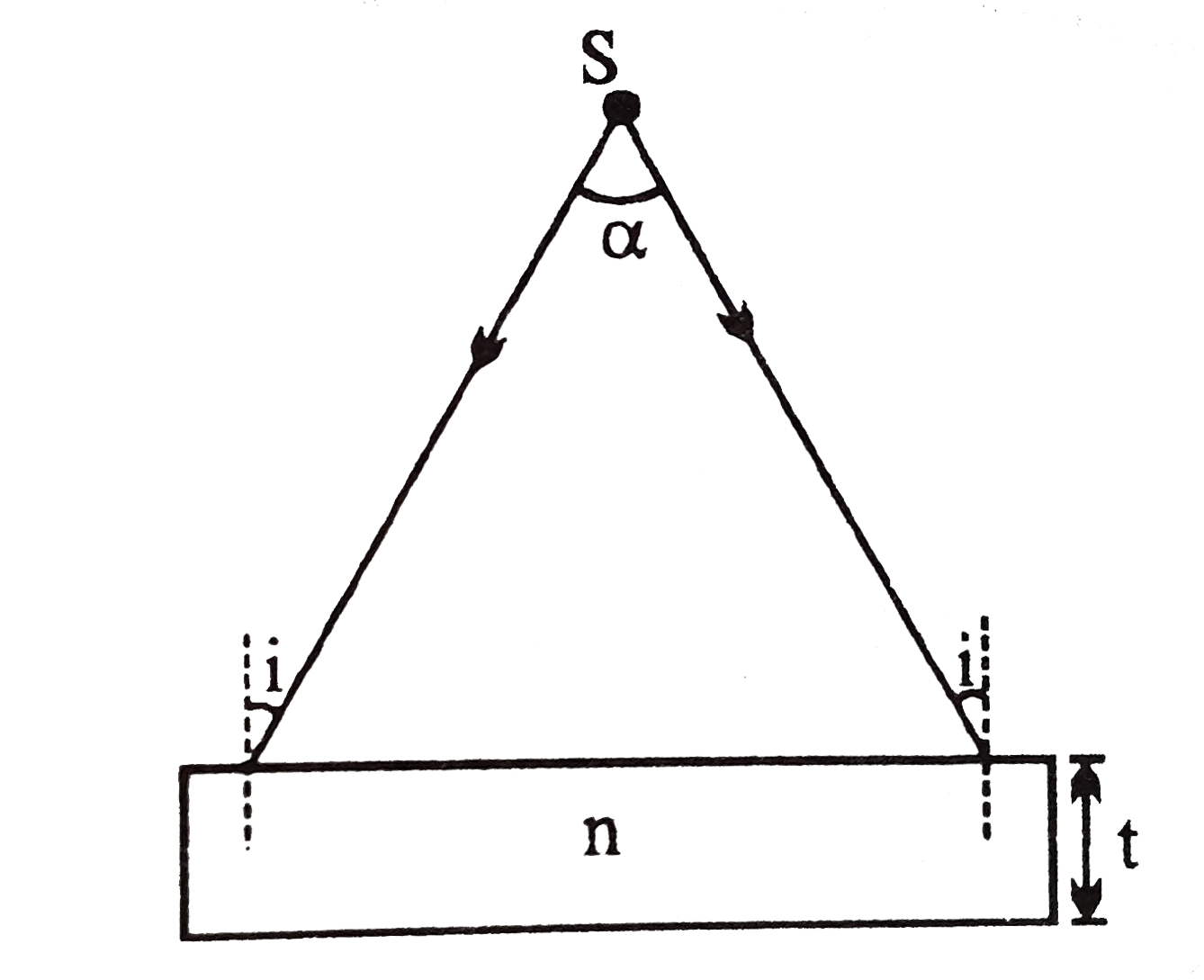
(b) Arectangular glass slab ABCDof refractive index n1 is immersed in water of refractive indexn2(n1>n2) A ray of light is incident at the surface ABof the slab as shown .The maximum value of the angle of incidenc eαmaxsuch that the ray comes out only from the other surface CDis given by
 (A) sin−1[n1n2cos(sin−1n2n1)] (B)sin−1[n1n2cos(sin−11n2)](C)sin−1(n1n2)(D)sin−1(n2n1)
(A) sin−1[n1n2cos(sin−1n2n1)] (B)sin−1[n1n2cos(sin−11n2)](C)sin−1(n1n2)(D)sin−1(n2n1)
(c) A point source of lightB is placed at a distance L inother of the centre of a mirror of width hung vertically ona wall A man walks is front of the mirror along a line parallel to the mirror at a distance 2L from it as shown .the greatest distance over which he can see the image of the light source in the mirror is (A)d/2 (B) d,(c )2d,(d)3d,
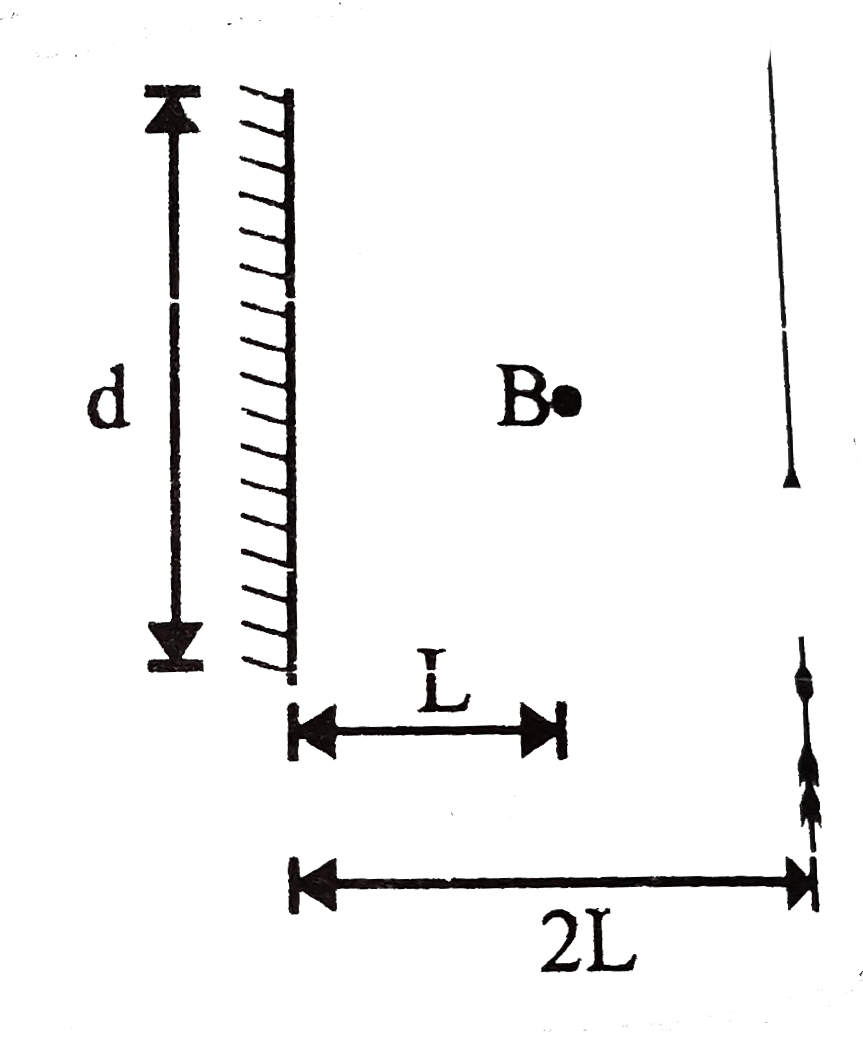 a hollow double concave lens is made of very thin transparents meterial .It can be filled with air or either of two liquids L1andL2having refractive indicesn1andn2respectively(n2>n!>1) the lens will diverge a parallel beam of light of it is filled with (A)air and placed in air.(B) air and immersed inL1(C ),L1 and immersed inL2 (D),L2 ans immersed in L1
a hollow double concave lens is made of very thin transparents meterial .It can be filled with air or either of two liquids L1andL2having refractive indicesn1andn2respectively(n2>n!>1) the lens will diverge a parallel beam of light of it is filled with (A)air and placed in air.(B) air and immersed inL1(C ),L1 and immersed inL2 (D),L2 ans immersed in L1
The correct Answer is:(a)B(b)A(c )D,(d)D
[B]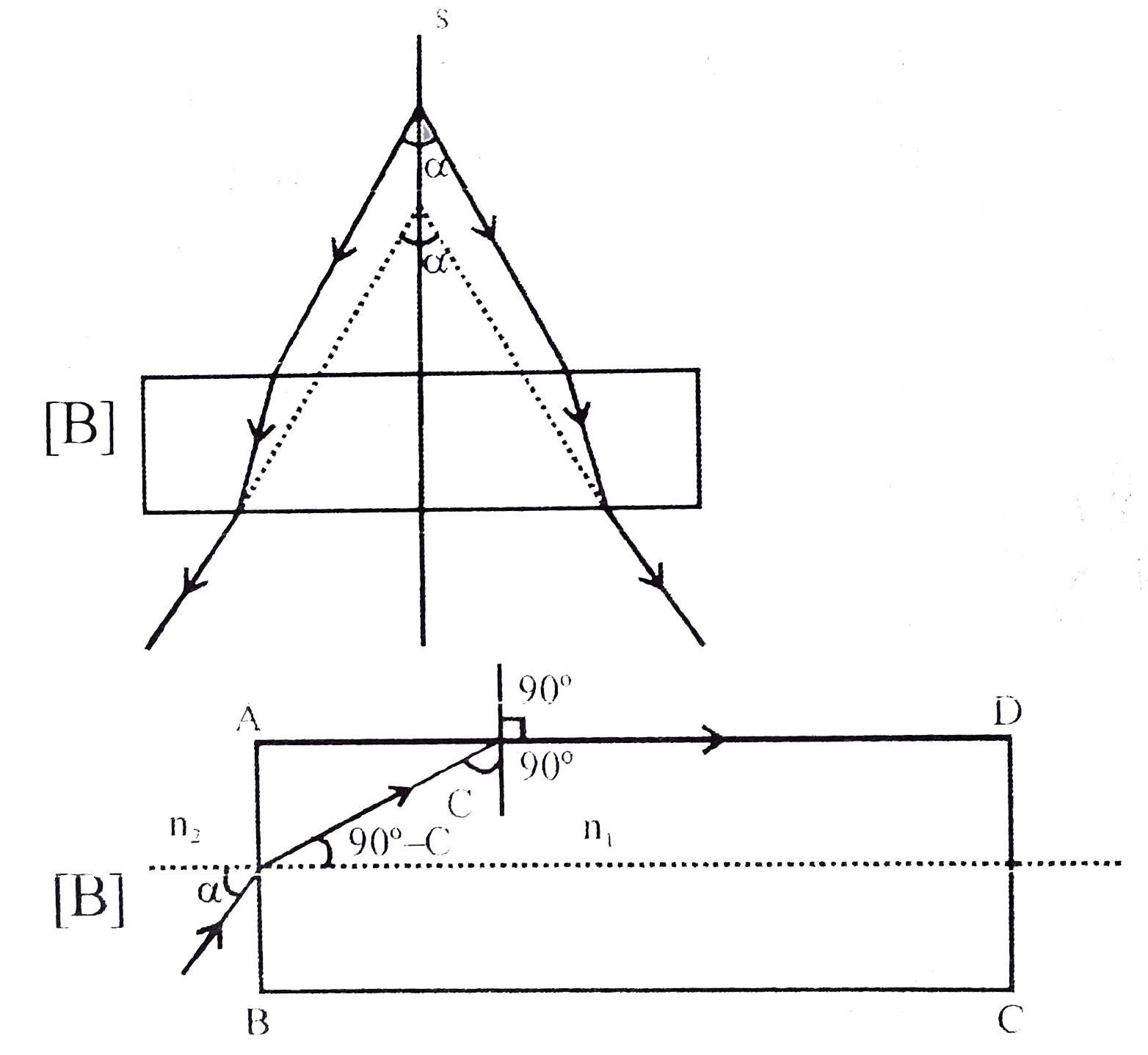
For critical angle at A,D,taking refraction atAD
n1sinC=n2⇒sinC=n2n1⇒C=sin−1n2n1….(1)
taking refractor at ABn2sinαmax=n1sin(90−C)⇒n2sinαmax=n1cosC
⇒αmax=sin−1n1n2cosC...(2)
from(1)&(2) αmax=sin−1[n1n2cos(sin−1n2n1)]
(c ) [D]d/2L=x2L⇒x=L
greastest distance=2x+d
=3d
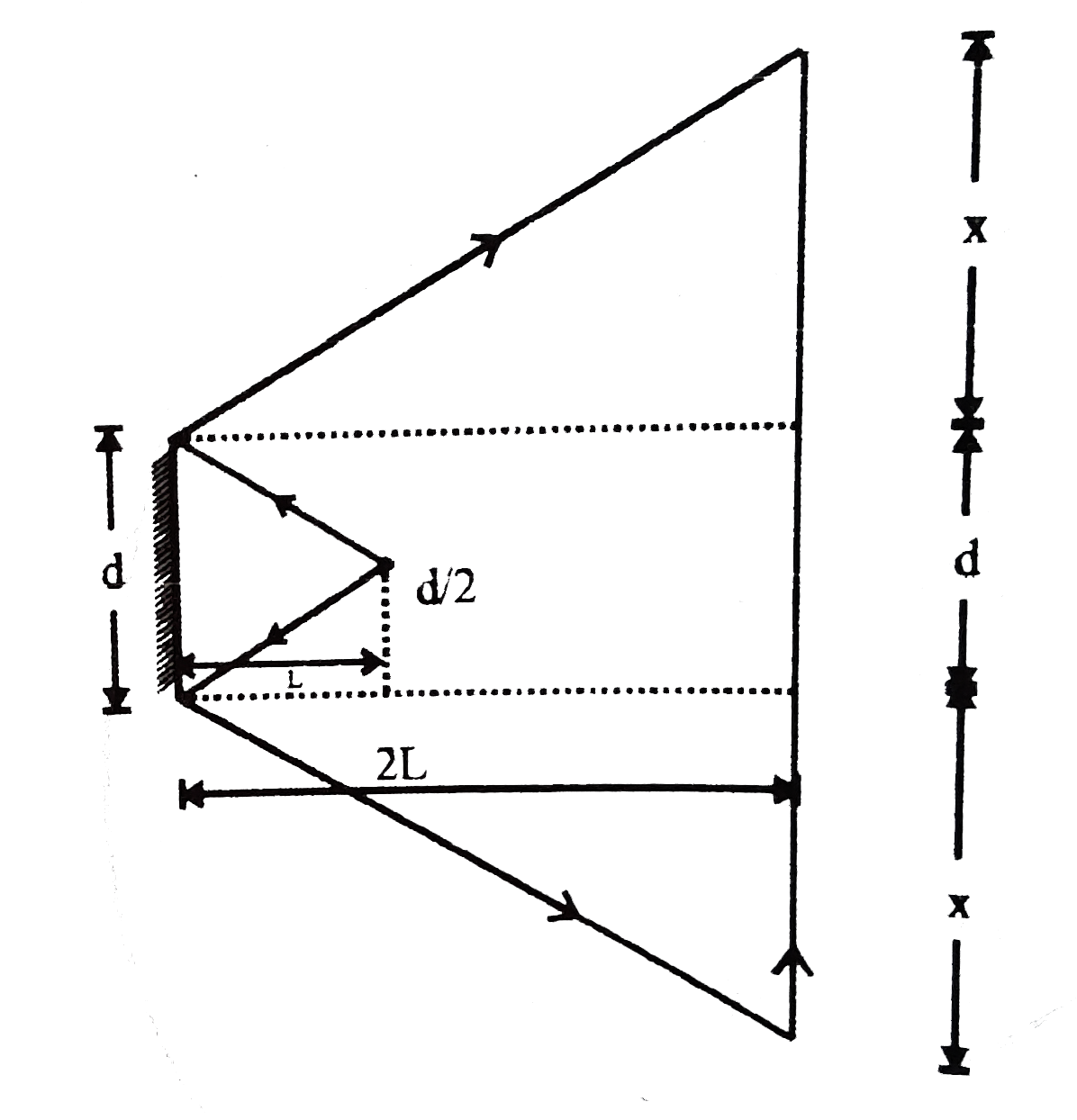
(d) [B] Behaviour of lens will be change when ray incidence from optically denser medium .
Similar Questions
एक प्रकाश-किरण काँच से वायु में संचरित होती है | (काँच का अपवर्तनांक = 1.5) आपतन कोण 50∘ है | तब किरण का विचलन
03:44View SolutionA ray of light is incident on a glass slab of thickness t, at an angle i,r is the angle of refraction in the glass slab. Distance travelled in the glass slab is
01:52View SolutionA beam of light is incident on a glass slab of refractive index 1.5 at an angle of incidence of 45o. Find the ratio of the width of refracted beam to the incident beam.
View SolutionA diverging beam of light from a point source S having divergence angle a falls symmetrically on a glass slab as shown. The angles of incidences of the two extreme rays are equal. IF the thickness of the glass slab is t and its refractive index is n, then the divergence angle of the emergent beam is
 View Solution
View SolutionA ray of light falls on a glass slab at an incident angle of 45^(@) and refracted at angle of 30^(@) . What is the measure of the angle of emergence 'e' ?
04:27View SolutionAn parallel beam of monochromatic light is incident on a glass slab at an angle of incidence 60∘. Find the ratio of the width of the beam in glass to that in air, if the refractive index of glass is 1.5.
05:27View Solution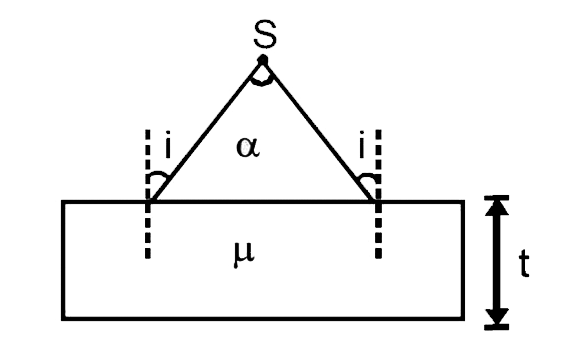
A diverging beam of light from a point source S having devergence angle α, falls symmetrically on a glass slab as shown. The angles of incidence of the two extreme rays are equal. If the thickness of the glass slab is t and the refractive index n, then the divergence angle of the emergent beam is02:29View SolutionA ray of light passes through a plane glass slab of thickness t and refractive index n=1.5. The angle between the incident ray and emergent ray will be
03:05View Solution

